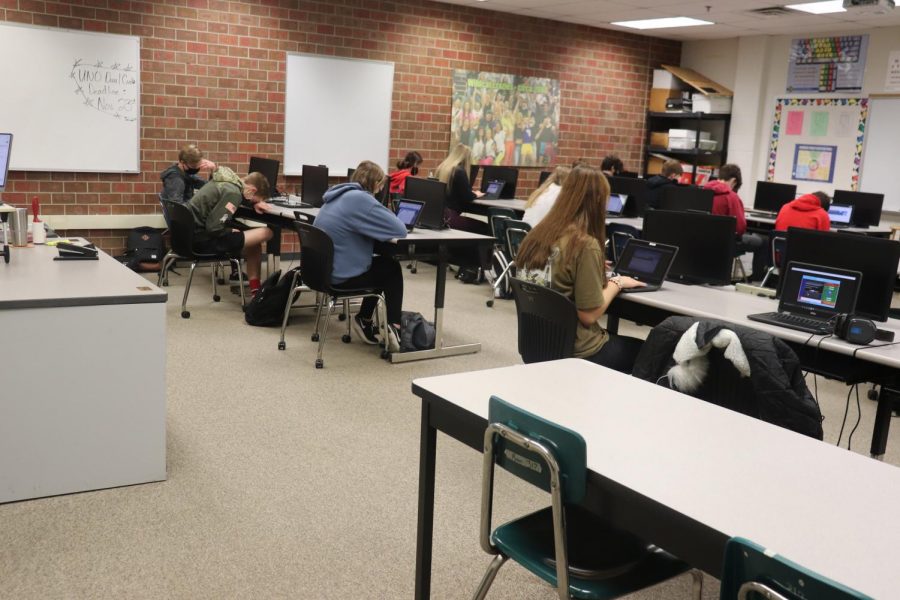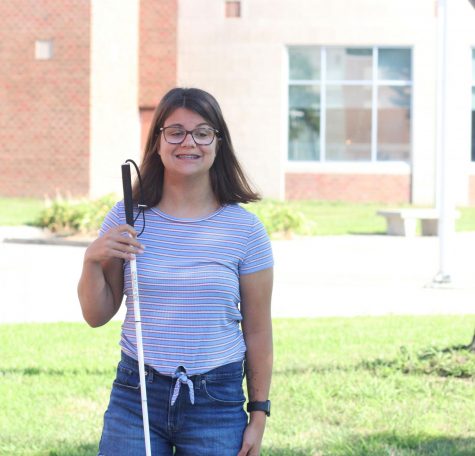COVID impacts week of Thanksgiving
Millard Public Schools gives students and staff extra days at home
Students work on their computers in German. All of them are invested in learning what their teacher is teaching them. “I work better in an environment with people,” sophomore Mackenzie Cory said. “It is harder to learn when I am at home. I do hope we go back to school the Monday after break.”
November 19, 2020
With the number of COVID-19 cases on the rise, Millard Public Schools has decided to carry out asynchronous learning on November 23 and 24. Asynchronous learning requires students to complete assignments posted on Google Classroom by their teachers.
MPS decided to do this remote option to give time for custodians to deep clean the schools, and this extended break also allows students and staff members to reset and this allows remote learners get out of quarantine if needed.. Students and parents were informed of this schedule change by way of an email sent out to families by Millard Public Schools Superintendent, Dr. Jim Sutfin.
“We have been able to handle situations where COVID-19 has been brought into our buildings on a case-by-case basis,” Sutfin said. “Unfortunately, many of these cases have caused significant quarantines of students and staff.”
Teachers and students have differing opinions about the new way of learning. Some students feel that asynchronous learning is a relief, and they are glad that they don’t have to get on a Zoom call.
“I like that we don’t have to get on a Zoom call, that’s always nice,” sophomore Mackenzie Cory said. “It will be nice to just do my assignments by myself and then have time to relax. I can also take the time I need to do the assignment instead of being stressed at school.”
Teachers are required to respond to emails on asynchronous days from 8:00 a.m. to 4:00 p.m. and assignments are to be posted by teachers at or before 8:00 a.m. It can sometimes be hard for teachers to respond to their email and having to deal with different things at home on days when students are neither in class nor on Zoom..
“It’s a challenge to juggle my own children and my students,” AP Statistics teacher Amy Delehant said. “Teachers are expected to respond to emails between 8:00-4:00. High school students generally tend to work on their school work after 4:00, so I’m pretty much responding to emails off and on all day.”
Delehant also said that asynchronous teaching is harder for some lessons and easier for others. She likes that students can learn at their own pace through asynchronous learning, but she also says that it is easier for her to answer questions when students are on Zoom.
“I have found that some lessons are easier for students to learn from a video,” Delehant said. “Some students like to be able to stop and rewind the video to learn at their own pace. However, some lessons are much more effective with “live” teaching and students and the teacher both benefit from questions asked and answered during the lesson. I think for AP Statistics students, a combination of both really works the best.”
Some teachers are very happy with the district’s decision to go asynchronous. They hope that students follow all of the rules in the nine days off. There have been several announcements put out, both in the Daily Announcements bulletin sent out to students and parents each day, and in the morning announcements on the intercom, to continue to follow the rules of the Three Cs–crowded places, close contact and confined spaces.







